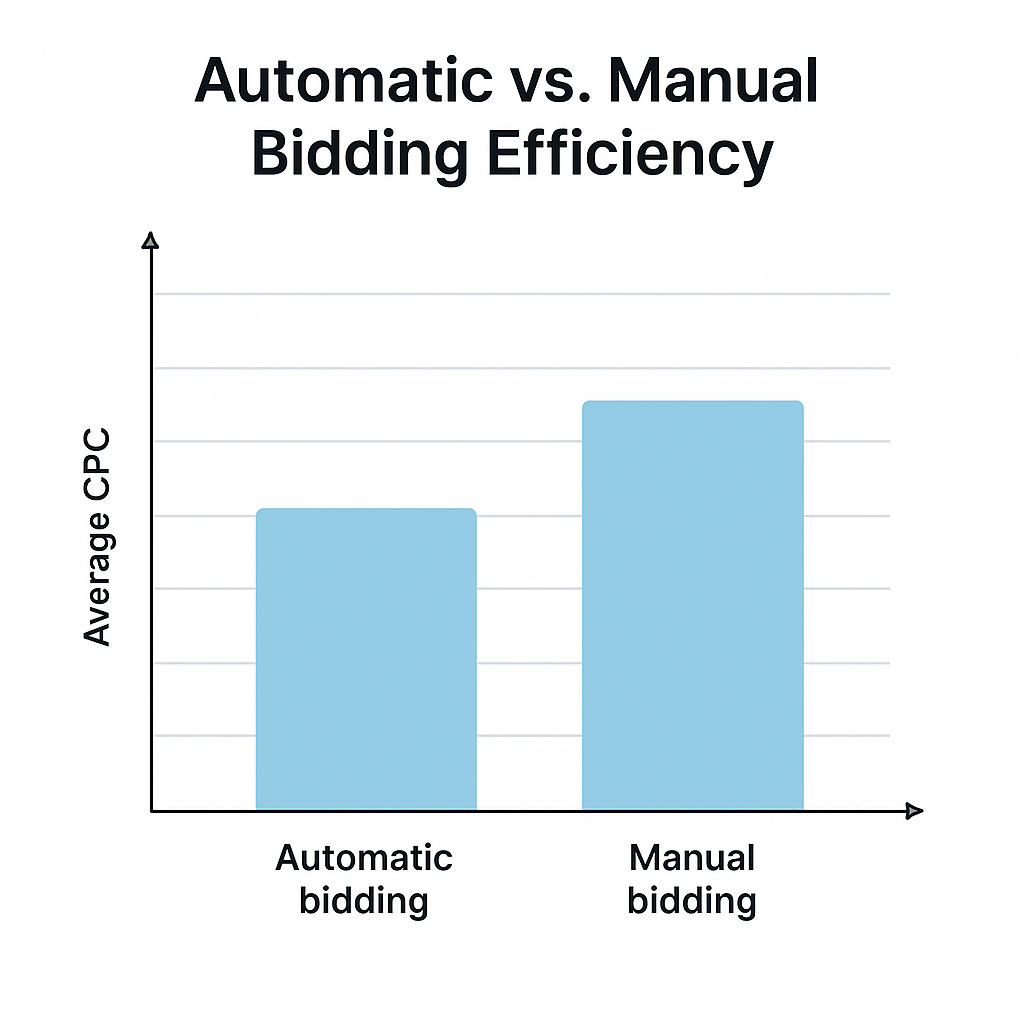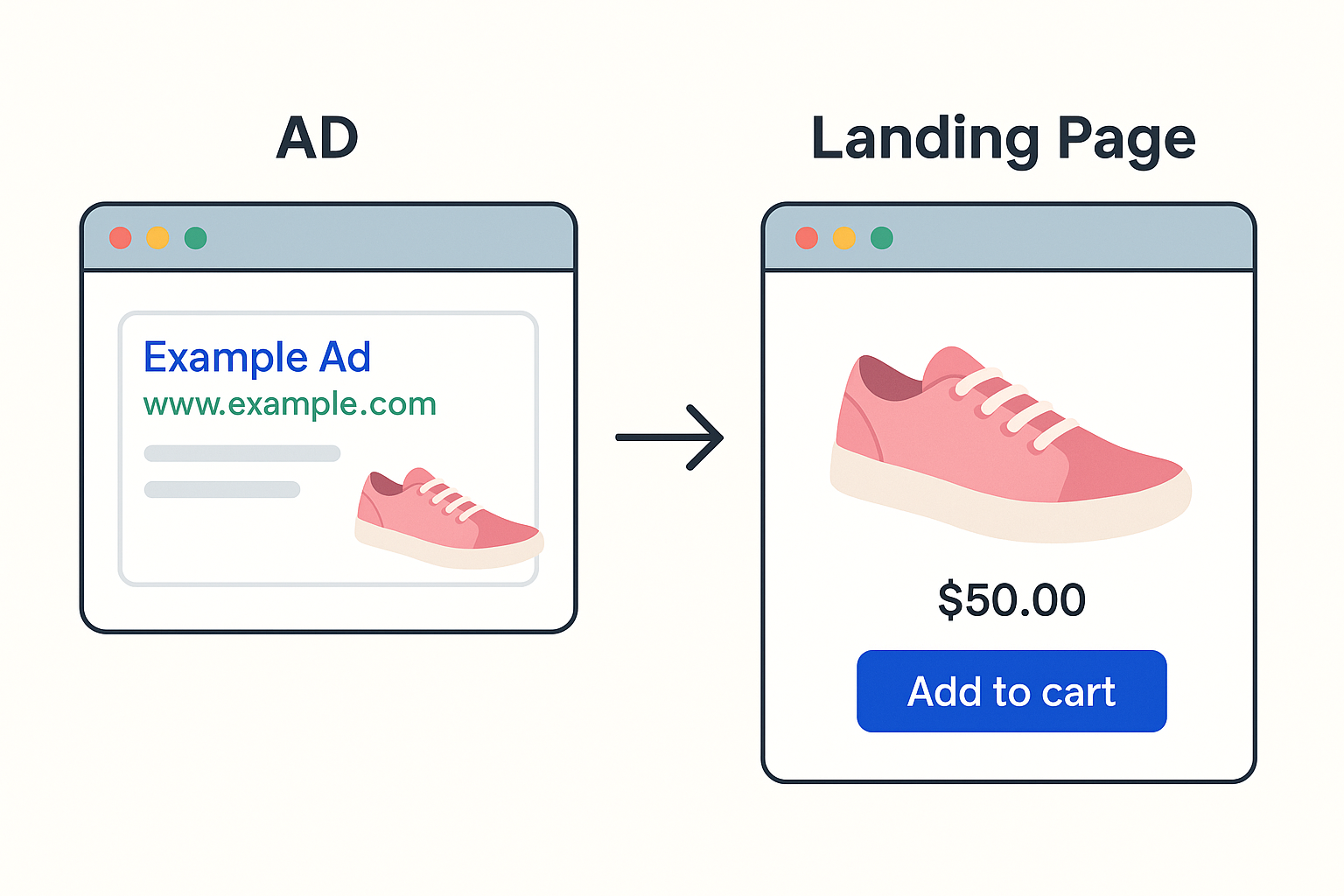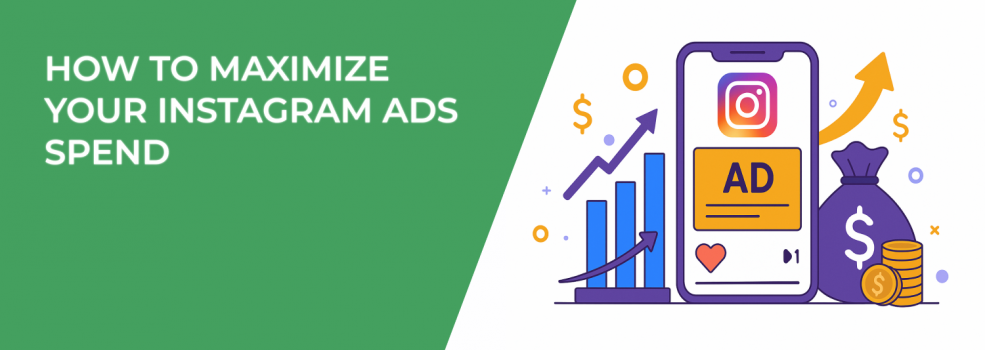If you’ve ever wondered why your Instagram ads don’t bring the results you hoped for, you’re not alone. Many advertisers see rising costs and dropping engagement — even when their content looks great. The truth is, maximizing your Instagram ad spend isn’t about spending less. It’s about spending smarter.
Let’s look at a few proven ways to make your budget go further, lower your ad costs, and get better results from every campaign.
1. Use Automatic Bidding to Save Money
If you’re new to Instagram ads, start with automatic bidding. It’s the simplest way to make sure you don’t overpay for results. Instagram’s system will set your bid automatically to get the best outcome for your chosen campaign goal.
When you don’t have much data yet — like an average CPC or conversion rate — automatic bidding helps you stay competitive without guessing how much to bid. It also prevents overspending, which is common for beginners.

For example, if your goal is conversions, Meta’s algorithm will automatically focus on users who are most likely to take action. As your ads run longer, you’ll gather data you can later use to switch to manual bidding and fine-tune performance.
If you’re unsure about when or how to adjust bids, this article can help: The Ultimate Guide to Facebook Ad Bidding Strategies for 2025.
2. Target the Right People with Precision
Precise targeting can dramatically reduce your costs. When your ads reach the right audience, engagement goes up and cost per click goes down.
Instagram gives you several powerful ways to target people:
-
Location targeting: Choose countries, cities, or even postal codes.
-
Demographics: Define your audience by age, gender, or language.
-
Interests: Target users based on the topics and pages they interact with — from travel and fitness to business and design.
-
Behaviors: Reach people who have taken specific actions, like visiting your site or watching your videos.
-
Custom audiences: Upload your customer list or retarget website visitors.
-
Lookalike audiences: Find new users similar to your best customers.
For example, if you sell skincare products, you could target women aged 25–40 who follow wellness or beauty pages and have recently engaged with skincare-related content.
To dive deeper into smart targeting, check out Facebook Ad Targeting 101: How to Reach the Right Audience — the same principles apply to Instagram.
3. Set Clear Goals Before You Spend
Without clear goals, even the best ad won’t perform well. Ask yourself, what do I want people to do when they see my ad?
Instagram offers three main campaign objectives:
-
Awareness: Great for getting more people to know your brand. You’ll focus on reach and impressions.
-
Consideration: Ideal for getting people to learn more or visit your site. You’ll track clicks, engagement, or video views.
-
Conversion: Best for driving sales, downloads, or sign-ups.
If you’re promoting a new product, start with awareness to build familiarity. Then move to consideration and, finally, conversion campaigns once your audience warms up.
For help choosing the right campaign type, read Meta Ad Campaign Objectives Explained: How to Choose the Right One.
4. Match Your Ads with Relevant Landing Pages
Here’s a simple rule: your landing page should always match your ad. If your ad shows a new line of sneakers, don’t send users to your homepage — send them straight to that product page.
A relevant landing page improves your conversion rate and your ad relevance score, which can lower your CPC.

For instance, an online boutique promoting “summer dresses under $50” should link directly to that collection. This gives users exactly what they expect after clicking, making them more likely to buy.
If your landing pages don’t match your ad message, you’ll waste money on users who lose interest right after clicking.
You can learn more about optimizing the post-click experience in Optimizing for Post-Click Experience: What Happens After.
5. Test Your Ads Regularly
Testing is one of the best ways to keep ad costs down. Even small changes — a new photo, headline, or call-to-action — can make a big difference.
Start by testing one element at a time, such as:
-
Creative: Try a video ad versus a static image.
-
Copy: Experiment with short versus long captions.
-
Call-to-action: Compare “Shop Now” and “Learn More.”
-
Audience: Test different interest groups or age ranges.
A/B testing helps you discover what your audience responds to most. Once you find a winning combination, scale that ad and pause the weaker ones.
Need more help figuring out how to test efficiently? You might like Key Strategies for Facebook Ad Testing: What You Need to Know.
6. Retarget Warm Leads
Most people don’t buy after seeing an ad once. Retargeting lets you show ads to users who have already interacted with your business — like visiting your website or watching your videos.
For example:
-
Show a reminder ad to users who added an item to their cart but didn’t check out.
-
Offer a small discount to people who viewed your product page but didn’t buy.
-
Retarget Instagram profile visitors with testimonials or reviews.
Retargeting usually costs less and delivers higher conversions because you’re reaching people already interested in your brand.
To explore proven ways to do this, read The Secret to Retargeting Success on Instagram: Best Practices.
7. Keep Tracking and Improving
Your ad results will change over time, so make it a habit to check performance weekly. Focus on a few key metrics:
-
Cost per click (CPC): How much you pay for each click.
-
Click-through rate (CTR): How often people click your ad.
-
Conversion rate: How many clicks turn into actions.
-
Return on ad spend (ROAS): How much revenue you earn for every dollar spent.
If one ad is getting clicks but no conversions, the problem might be your landing page or offer. If your CPC keeps rising, your audience might be too broad or tired of seeing the same creative.
For advanced tips on reading and improving performance data, see How to Analyze Instagram Ads Performance and Turn Insights into Action.
Final Thoughts
Maximizing your Instagram ad spend is about combining strategy with consistency.
Use automatic bidding to control costs. Target precisely to reach people who care. Set clear goals. Match ads with relevant landing pages. Test, retarget, and keep improving.
With these steps, your ad dollars will stretch further — and your results will start to match your effort.

